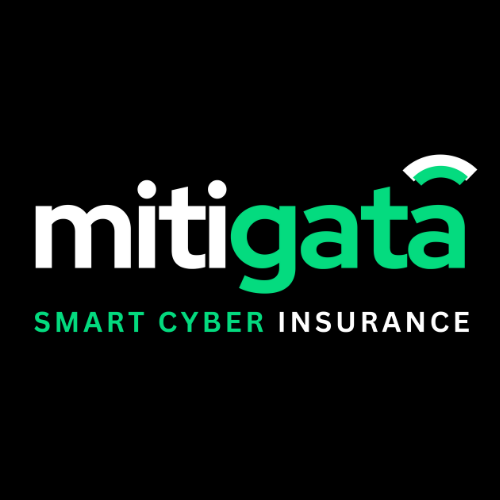Recently, a 158-year-old UK-based company, KNP Logistics, was shut down by hackers.
And this happened not through some massive breach, but through a single weak password.
The attackers, known as the Akira ransomware group, guessed a single employee’s login and gained access to the company’s internal network.
It is said that they demanded a ransom of around £5 million, which the company was unable to pay. As a result, 700 people lost their jobs.
Such cases are very unique. Most breaches today don’t happen through highly modern techniques.
They occur because someone clicks the wrong link, reuses a password, or fails to apply a basic security update.
According to reports, 68-95% of data breaches are caused by human error.
We are aware that managing a fast-growing business is challenging. Having the appropriate security system is therefore essential.
An Intrusion Detection and Prevention System (IDPS) provides an extra layer of defence by detecting suspicious activity and preventing attacks before they spread.
Mitigata – Your Trusted Partner for Intrusion Detection and Prevention Systems
At Mitigata, we help you make the right decisions. We have partnered with best IDPS tools providers such as Fortinet, Palo Alto Networks, SonicWall and others. We offer personalised solutions based on your infrastructure, risk profile, and compliance goals. Here’s how we support you:- Fit-for-purpose recommendations based on your actual risk
- Access to trusted providers with proven security tools
- Best-in-market pricing through our industry partnerships
- End-to-end guidance from selection to deployment
- Our 24/7 security support is always available to answer questions
- Smooth integration with your existing tech stack.
Next-Generation IPS Starting at Just ₹1,11,600 *

Best 5 Intrusion Detection/Prevention Systems
Take a look at 5 industry best providers with detailed information about the same
1. Fortinet

Fortinet’s FortiGate platform integrates Intrusion Prevention System (IPS) capabilities using Snort, an open-source engine trusted for inspecting network traffic and detecting threats. FortiGate’s IPS solution can be deployed easily across all operating systems, including Linux and Windows.
Key Features:
- One of the best open-source IPS engines for high detection accuracy.
- Real-time traffic monitoring with real-time alerts for malicious activity.
- Provides deep packet logging and protocol analysis for detailed insights.
- Supports OS fingerprinting and wide deployment across all network environments.
Looking to upgrade your complete cybersecurity? Explore the top MDR providersin our detailed comparison guide.
2. Palo Alto Networks

Palo Alto Networks delivers next-gen Advanced Threat Prevention powered by machine learning, deep learning, and AI technologies. Their solution surpasses traditional methods by analysing traffic behavior, identifying complex patterns, and blocking both known and zero-day threats in real-time.
Key Features:
- AI-powered detection using machine learning and deep learning for advanced pattern recognition.
- Protection against zero-day threats, malware, spyware, and more.
- Real-time blocking of network and app-layer exploits like port scans and RCE.
- High visibility into network traffic with granular control over applications.
3. SonicWall

SonicWall’s IPS uses a Deep Packet Inspection (DPI) engine to safeguard key network services such as web, email, and file transfers. It can swiftly detect and block a wide range of assaults, including application vulnerabilities, worms, Trojans, spyware, and other harmful activities.
Key Features:
- Deep Packet Inspection (DPI) for comprehensive traffic analysis.
- Signature granularity with flexible attack group or per-signature prevention.
- Proactive defence against newly discovered vulnerabilities.
- Automated signature updates with Distributed Enforcement Architecture (DEA).
Fast Moving Security for Fast Moving businesses
Enjoy automated intrusion prevention with seamless integration, 24/7 expert support, and easy to manage.

4. Trend Micro

Trend Micro’s Intrusion Prevention System leverages advanced threat intelligence to provide real-time protection and continuous monitoring. Their IPS solution uses advanced models to detect and block malicious traffic, malware behavior, and DGA-based DNS requests.
Key Features:
- Real-time protection across hybrid cloud environments.
- Comprehensive malware and vulnerability protection.
- Seamless integration with existing network security tools like SIEM.
- Integrated global threat intelligence and Zero Day Initiative data for advanced attack protection.
In 2023, 74% of data breaches involved the misuse of privileged credentials. Don’t take chances – explore the best PIM solutions now.
5. Sophos

Sophos Firewalls, particularly their Next-Generation Firewall (NGFW) solutions, come with integrated Intrusion Prevention System (IPS) capabilities. Unlike IDS, the IPS in Sophos Firewalls goes beyond just detecting threats. It actively blocks malicious packets, resets TCP connections, and prevents the spread of malware.
Key Features:
- Active prevention of detected threats (e.g., blocking malicious packets).
- Snort integration enables signature-based detection.
- Machine learning can help improve threat detection and reduce false positives.
- Integration with Sophos Endpoint Protection enables the sharing of threat intelligence.
| Solution | Key Features | Detection Type |
|---|---|---|
| Fortinet | Snort-based IPS, real-time protection, deep packet inspection | Signature-based & Behavioral |
| Palo Alto Networks | Multi-layer protection, behavior-based detection, application traffic inspection | Signature-based & Behavioral |
| SonicWall | Deep Packet Inspection (DPI), proactive defense, signature granularity | Signature-based |
| Trend Micro | Real-time protection, continuous traffic monitoring | Signature-based |
| Sophos | Next-gen IPS, machine learning, integration with endpoint protection | Signature-based & Behavioral |
From Free Demo to Full Defense End to End Solutions

Conclusion
Fortinet, Palo Alto Networks, Trend Micro, SonicWall, and Sophos all offer the best protection.
However, we understand that it’s not easy to find the best intrusion detection system or best intrusion detection and prevention system since it depends upon many factors, such as your existing infrastructure. You won’t want to overpay for a solution that is not easy to manage and integrate with your existing tools.
Let Mitigata handle the hustle of finding the best IPS tool for your business. With our personalised solutions, cost-effective pricing, end-to-end deployment, and 24/7 support, you can be confident about your cybersecurity.
Get in touch with Mitigata now and strengthen your defence system.
FAQS on IDS Solutions
Q1. What is the use of an IDS tool?
An Intrusion Detection System (IDS) monitors network traffic for suspicious activity and potential threats. It helps detect unauthorised access and alerts administrators, improving overall network security.
Q2. Is IDS a SIEM tool?
No, IDS (Intrusion Detection System) is not a SIEM (Security Information and Event Management) tool. While both monitor and analyse security events, SIEM provides centralised logging and deeper analysis, while IDS focuses on detecting threats in real time.
Q3. Which intrusion detection system is best?
The best IDS depends on your needs. Popular options include Palo Alto Networks and Fortinet. Factors like network size, threat detection capabilities, and ease of integration will determine the right fit for your business.
Q4. Which one is better, IDS or IPS?
It depends on your priorities. IDS detects threats and provides alerts, while IPS (Intrusion Prevention System) actively blocks attacks. If you need proactive threat prevention, IPS may be the better choice; for monitoring and detection, IDS works well.
Q5. What is the difference between IDS, IPS, and firewall?
IDS monitors and alerts on potential threats, IPS prevents and blocks them, and a firewall controls incoming and outgoing network traffic based on security rules. While all protect the network, each has a different role in threat management.
Q6. Why would you choose IDS over IPS?
You might choose IDS over IPS if you want to monitor and detect threats without immediately blocking traffic. IDS provides visibility and insights into security events, ideal for environments that need more detailed analysis or where blocking traffic may be too disruptive.
Q7. What is IDS and IPS with an example?
IDS (Intrusion Detection System) monitors network traffic for suspicious activity, while IPS (Intrusion Prevention System) not only detects threats but actively blocks them. For example, an IDS might alert you to a suspicious login attempt, while an IPS would block the attack in real time.
Q8. What is an example of IPS?
An example of IPS is SonicWall IPS, which actively blocks malicious traffic and prevents exploits from entering your network, protecting against vulnerabilities in real time.
Q9. What is the difference between IDS and IPS and firewall?
IDS detects and alerts, IPS blocks attacks, and a firewall filters network traffic based on predefined rules. While IDS and IPS focus on threat detection and prevention, a firewall primarily controls access to and from your network.
Q10. What is the difference between NGFW and IDS?
NGFW (Next-Generation Firewall) combines traditional firewall functions with additional capabilities like application awareness and intrusion prevention. IDS, on the other hand, primarily focuses on detecting and alerting network traffic anomalies, without blocking traffic directly.

